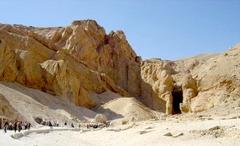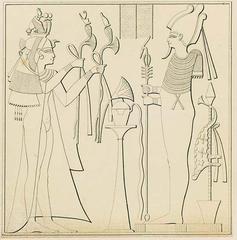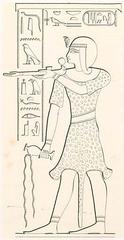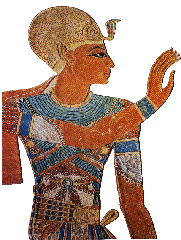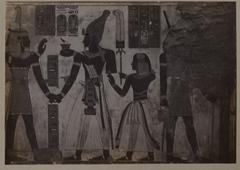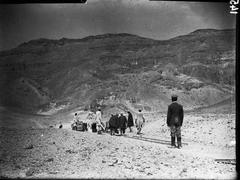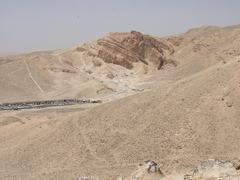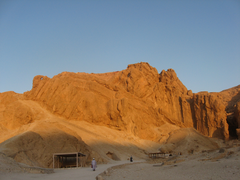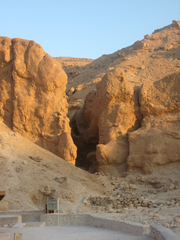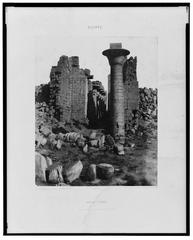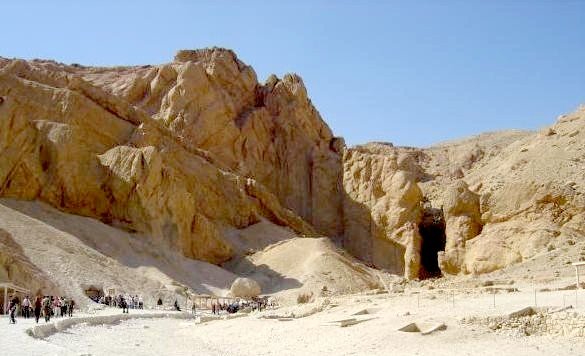
Visiting Hours, Tickets, and Historical Significance of the Valley of the Queens, Luxor, Egypt
Publication Date: 23/07/2024
Introduction to the Valley of the Queens
Nestled on the west bank of the Nile near Luxor, Egypt, the Valley of the Queens is an ancient necropolis that served as the final resting place for queens and royal children during the New Kingdom period (1550-1070 BCE). Known in ancient times as Ta-Set-Neferu, which translates to ‘The Place of Beauty,’ the Valley of the Queens is a treasure trove of history, art, and religious significance. This comprehensive guide will explore the origins, architectural evolution, and religious importance of the Valley of the Queens, while also providing practical visitor information and travel tips.
The Valley of the Queens was chosen for its relative seclusion and proximity to the Valley of the Kings. The earliest tombs date back to the 18th Dynasty, and the site continued to be used through the 20th Dynasty. The tombs evolved significantly over time, from simple chambers to elaborate tombs featuring intricate wall paintings and extensive burial goods. For example, the tomb of Queen Nefertari (QV66) is renowned for its vivid wall paintings and elaborate decorations (UNESCO).
Beyond its architectural significance, the Valley of the Queens holds immense cultural and religious importance. The tombs were designed to ensure the safe passage of the deceased into the afterlife, featuring scenes from the Book of the Dead and images of deities like Osiris, Anubis, and Hathor (British Museum). This guide will delve into notable tombs, archaeological excavations, preservation efforts, and practical advice for visitors to help you make the most out of your visit to this fascinating historical site.
Contents Overview
- Introduction
- History of the Valley of the Queens
- Origins and Early Use
- Architectural Evolution
- Religious Significance
- Notable Tombs and Discoveries
- Tomb of Nefertari (QV66)
- Tomb of Khaemwaset (QV44)
- Tomb of Amunherkhepshef (QV55)
- Archaeological Excavations
- Preservation and Conservation
- Modern Significance
- Visitor Information
- Visiting Hours
- Ticket Prices
- Travel Tips
- Nearby Attractions
- Accessibility
- FAQ
- Conclusion
History of the Valley of the Queens
Origins and Early Use
The Valley of the Queens was chosen for its relative seclusion and proximity to the Valley of the Kings. The earliest tombs date back to the 18th Dynasty, with the site continuing to be used through the 20th Dynasty.
Architectural Evolution
The tombs in the Valley of the Queens evolved significantly over time. Early tombs were relatively simple, consisting of a single chamber or a small series of rooms. However, as the New Kingdom progressed, the tombs became more elaborate. By the 19th and 20th Dynasties, tombs featured multiple chambers, intricate wall paintings, and extensive burial goods. The tomb of Queen Nefertari, the wife of Ramses II, is a prime example of this architectural and artistic evolution. Her tomb, designated QV66, is renowned for its vivid wall paintings and elaborate decorations (UNESCO).
Religious Significance
The Valley of the Queens was not just a burial site but also a place of religious significance. The tombs were designed to ensure the safe passage of the deceased into the afterlife. This belief is evident in the tomb decorations, which often depict scenes from the Book of the Dead, a collection of spells and incantations intended to guide the deceased through the underworld. The tombs also feature images of various deities, including Osiris, Anubis, and Hathor, who were believed to protect and assist the deceased in their journey (British Museum).
Notable Tombs and Discoveries
Tomb of Nefertari (QV66)
One of the most famous tombs in the Valley of the Queens is that of Queen Nefertari, the favorite wife of Ramses II. Discovered in 1904 by Italian archaeologist Ernesto Schiaparelli, the tomb is celebrated for its stunning wall paintings, which depict Nefertari in various scenes of the afterlife. The tomb’s vibrant colors and intricate details have led many to consider it one of the most beautiful in Egypt (Getty Conservation Institute).
Tomb of Khaemwaset (QV44)
Another significant tomb is that of Khaemwaset, a son of Ramses III. This tomb is notable for its extensive use of color and detailed depictions of Khaemwaset’s journey through the afterlife. The tomb also contains numerous inscriptions and hieroglyphs, providing valuable insights into the religious beliefs and practices of the time (Theban Mapping Project).
Tomb of Amunherkhepshef (QV55)
The tomb of Amunherkhepshef, another son of Ramses III, is also noteworthy. Discovered in 1903, the tomb features detailed wall paintings that depict Amunherkhepshef in various scenes with his father and the gods. The tomb also contains numerous artifacts, including a well-preserved sarcophagus and various burial goods (Theban Mapping Project).
Archaeological Excavations
The Valley of the Queens has been the site of numerous archaeological excavations since the early 19th century. Early explorers, such as Giovanni Belzoni and John Gardner Wilkinson, made significant discoveries, but it was not until the early 20th century that systematic excavations began. Ernesto Schiaparelli’s discovery of Nefertari’s tomb in 1904 marked a turning point in the site’s exploration. Since then, numerous other tombs have been discovered and studied, providing valuable insights into the lives and beliefs of the ancient Egyptians (Egyptian Ministry of Tourism and Antiquities).
Preservation and Conservation
The preservation and conservation of the tombs in the Valley of the Queens have been ongoing challenges. The tombs’ delicate wall paintings are particularly vulnerable to damage from humidity, temperature fluctuations, and human activity. In recent years, significant efforts have been made to protect and conserve these invaluable cultural treasures. The Getty Conservation Institute, for example, has been involved in extensive conservation work in Nefertari’s tomb, employing advanced techniques to stabilize and preserve the wall paintings (Getty Conservation Institute).
Modern Significance
Today, the Valley of the Queens remains a site of immense historical and cultural significance. It is a UNESCO World Heritage Site and continues to attract scholars and tourists from around the world. The ongoing archaeological work and conservation efforts ensure that this ancient necropolis will continue to provide valuable insights into the lives and beliefs of the ancient Egyptians for generations to come (UNESCO).
Visitor Information
Visiting Hours
The Valley of the Queens is open to visitors daily from 6 am to 5 pm. It is recommended to visit early in the morning to avoid the heat and crowds.
Ticket Prices
Entrance fees for the Valley of the Queens vary. As of the latest update, general admission is approximately 100 EGP for adults. A separate ticket is required to visit the Tomb of Nefertari (QV66), priced at around 1400 EGP.
Travel Tips
- Best Time to Visit: The best time to visit the Valley of the Queens is during the cooler months from October to April.
- What to Bring: Comfortable walking shoes, sunscreen, a hat, and water are essential. Photography is generally prohibited inside the tombs.
- Guided Tours: Consider hiring a guide to gain deeper insights into the history and significance of the tombs.
Nearby Attractions
While in Luxor, visitors can also explore nearby attractions such as the Valley of the Kings, the Temple of Hatshepsut, and the Luxor Temple. These sites offer a comprehensive view of ancient Egyptian history and culture.
Accessibility
The Valley of the Queens is accessible by car or taxi from Luxor. The site is well-maintained, with clear signage and information panels. However, some tombs may have limited accessibility for visitors with mobility issues.
FAQ
What are the visiting hours for the Valley of the Queens?
The Valley of the Queens is open daily from 6 am to 5 pm.
How much do tickets cost?
General admission is approximately 100 EGP, with an additional charge of 1400 EGP for the Tomb of Nefertari (QV66).
Are guided tours available?
Yes, guided tours are available and recommended for a more in-depth experience.
Conclusion
The Valley of the Queens is a remarkable historical site that offers a unique glimpse into the lives and beliefs of ancient Egyptian royalty. With its rich history, stunning tombs, and ongoing conservation efforts, it remains a must-visit destination for history enthusiasts and travelers alike. Plan your visit today to explore this fascinating necropolis and uncover the secrets of ancient Egypt.
Call to Action: Download the Audiala mobile app for more travel tips and updates, explore related posts on our blog, and follow us on social media for the latest news and insights into historical sites around the world.
Sources and Further Reading
- UNESCO, 2024, Valley of the Queens
- British Museum, 2024, Egyptian Death and Afterlife
- Getty Conservation Institute, 2024, Nefertari Conservation Project
- Egyptian Ministry of Tourism and Antiquities, 2024, Official Site
- Egypt Tours Plus, 2024, Valley of the Queens
- Ancient History Encyclopedia, 2024, Valley of the Queens
- Lonely Planet, 2024, Valley of the Queens
- Planetware, 2024, Valley of the Queens
- Britannica, 2024, Valley of the Queens
